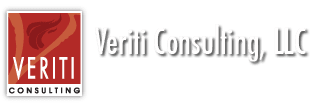
How To Minimize The Risk Of Insurance Fraud In Your Organization
1. Implement Effective Financial Controls
Insurance fraud frequently involves employee complicity with outside parties. Effective financial controls that quickly flag suspicious activity are one of the better ways to detect, and deter insider fraudulent activity. Experienced forensic accountants can often give businesses insight into both common and more rare insurance fraud schemes and insight on how to develop devise and implement effectual financial internal controls.
2. Reduce the Opportunity for Fraud
Insurance fraud is regularly a crime of opportunity. Organizations taking a proactive approach towards eliminating opportunities can effectively discourage fraud attempts. Practical methods of reducing opportunities for fraud include not only the implementation of controls but also employee education and awareness. Employees who are on the front line of insurance fraud frequently starts and know what to look for are better equipped to notice the evidence of fraud before it starts.
3. Perform Regular Audits
An employee or external party with the opportunity to commit fraud may be less likely to attempt defrauding the company if audits are periodically performed outside of the typical rolling schedule and are designed to target common fraud schemes. While internal audits are integral to financial compliance, external audits should also be utilized to impartially detect existing irregularities or potential opportunities for fraud or misappropriation of assets.
4. Delegate the Responsibility for Fraud Deterrence
Every organization should be able to answer the question, “Who is responsible for implementing effective internal controls?” A clear line of responsibility can ensure that risk minimization efforts are up-to-date and ongoing. A comprehensive fraud deterrence plan can also assist organizations in investigating and responding to various types of irregularities that can be early indicators of fraudulent activity.
5. Partner with an Experienced and Qualified Accounting and Fraud Consultant
Organizations that use external consulting partners experienced in fraud risk management have a better chance at preventing sophisticated insurance fraud schemes. They are alos better positioned to detect and minimize damages in the event fraudulent activities exist.
___________________________________________
Veriti Consulting, LLC provides fraud investigation services to organizations across the U.S., and has experience in helping organizations mitigate insurance fraud risks. The firm is also a licensed private investigative agency. Learn more on our insurance fraud and forensic accounting pages or contact us toll free at 855.232.4410.

